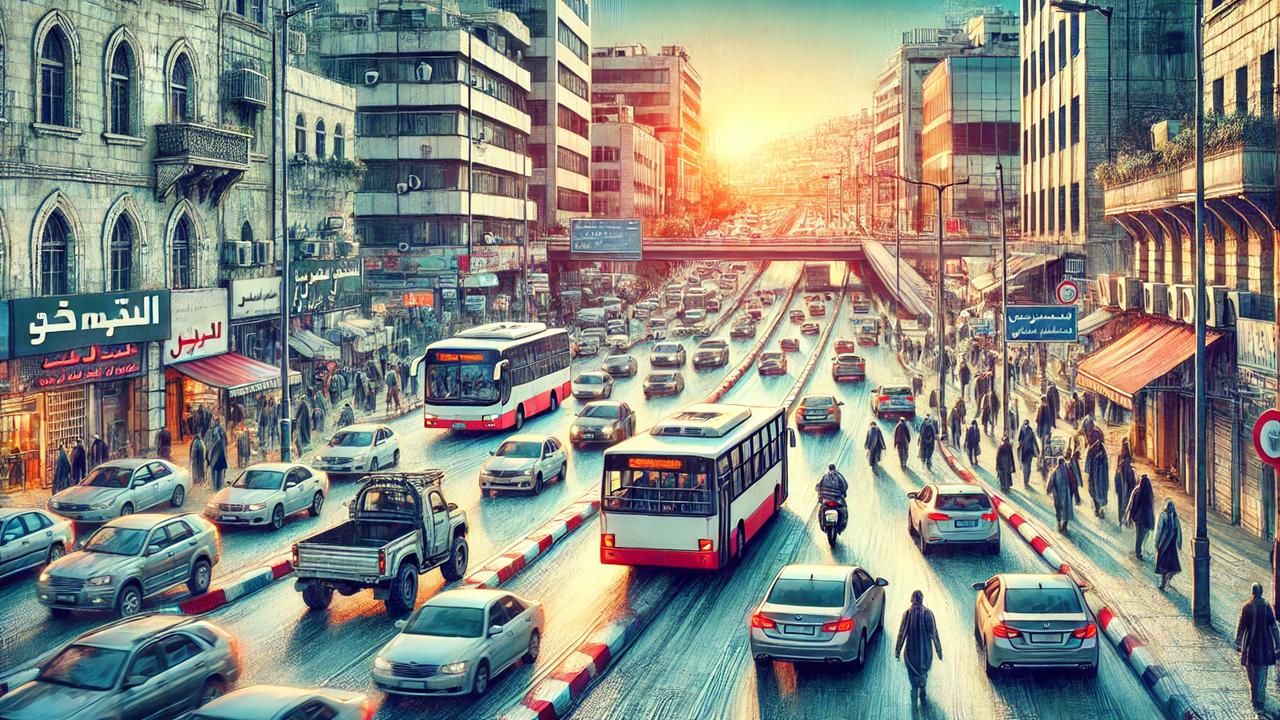Transforming Amman: A Blueprint for a Transit-Oriented Future
A new report by the World Bank and Greater Amman Municipality outlines a comprehensive plan for transit-oriented development in Amman, Jordan. The plan focuses on expanding the Bus Rapid Transit system, improving pedestrian accessibility, and enhancing public spaces to create a more livable and sustainable city.

Amman, the vibrant capital of Jordan, is at a pivotal juncture. A new report titled "Transit-Oriented Neighborhoods in Amman: Neighborhood Selection, Analysis, and Urban Design" by the World Bank, in collaboration with the Greater Amman Municipality (GAM) and Ecosistema Urbano, lays out an ambitious plan to reshape the city's urban landscape. With a population of 4.3 million, nearly half of Jordan's total, Amman faces significant challenges in transportation, urban sprawl, and social equity. The report offers a comprehensive strategy to address these issues through integrated planning and transit-oriented development (TOD).
The Urban Vision: A City on the Move
Amman, with its hilly plateau and low-rise buildings, has long struggled with traffic congestion and inadequate public transportation. Currently, only 14% of residents use public transport, while 33% rely on cars, and 9% on taxis, leading to severe traffic jams and long commuting times. The city's urban sprawl has resulted in structural inequalities, with vulnerable populations concentrated in the east, far from job opportunities and essential services.
To combat these issues, GAM has adopted a forward-thinking approach, integrating transportation strategies with urban planning. Central to this vision is the expansion of the Bus Rapid Transit (BRT) system. Phase 1 of the BRT, operational since 2021, connects the northeastern and northwestern districts to the city center. Phase 2 aims to link the eastern and southern districts, with a future connection to Zarqa planned for Phase 3. The goal is to increase public transport usage from 14% to 40%, promoting economic growth and housing development along core transit corridors.
Key Challenges and Opportunities
The report highlights several critical challenges: urban sprawl, traffic congestion, unequal access to services, and climate vulnerabilities. However, it also identifies significant opportunities. Expanding the BRT network is expected to improve access to jobs and services, drive productivity growth, and stimulate demand for additional floor space in neighborhoods like Sweileh District and southern Amman.
A climate-conscious approach is integral to this plan. Amman is particularly vulnerable to climate change, with rising temperatures and frequent floods. The city has implemented several environmental policies, including a Climate Plan aiming for carbon neutrality by 2050. Strategies include promoting solar energy, rainwater harvesting, green area development, and solid waste reduction. The report calls for creating green corridors along valleys and main roads, including the BRT lines, to enhance urban livability and climate resilience.
A Holistic Approach to Urban Design
The report outlines a detailed methodology for selecting and prioritizing projects, focusing on the areas around Al-Yarmouk Street and the Sweileh Terminal. The approach is data-driven, using spatial analysis to identify high-impact areas for TOD. Projects are prioritized based on factors such as population impact, land ownership, and potential co-benefits like increased green spaces and improved public health.
Design guidelines emphasize creating pedestrian-friendly streets, enhancing public spaces, and integrating green infrastructure. For instance, Al-Yarmouk Street will see improvements in pedestrian connections, public spaces, and green areas. Similarly, Sweileh Terminal will undergo enhancements to boost pedestrian mobility and the quality of public spaces.
Implementation and Expected Outcomes
The report presents three scenarios (A, B, and C) to simulate the impact of different stop placements and pedestrian improvements on accessibility. These simulations provide a clear roadmap for implementation, ensuring that the BRT system maximizes accessibility and benefits the most significant number of residents.
The expected outcomes are transformative. The integrated approach aims to create a network of interconnected, accessible streets and public spaces, supporting the BRT system and enhancing overall city productivity and livability. Improved accessibility is expected to increase public transport usage, reduce traffic congestion, and foster a more equitable urban environment. The plan also aligns with Amman's climate goals, promoting sustainable urban growth and resilience to climate change.
The "Transit-Oriented Neighborhoods in Amman" report offers a visionary blueprint for the city's future. By integrating transportation and urban planning, Amman can address its most pressing challenges, from traffic congestion to social inequality and climate vulnerabilities. The proposed projects and strategies promise to create a more accessible, livable, and sustainable city for all its residents.
As Amman embarks on this transformative journey, the city's commitment to integrated planning and TOD will be crucial. With continued collaboration between GAM, the World Bank, and local stakeholders, Amman can look forward to a brighter, more connected future.
- FIRST PUBLISHED IN:
- Devdiscourse










